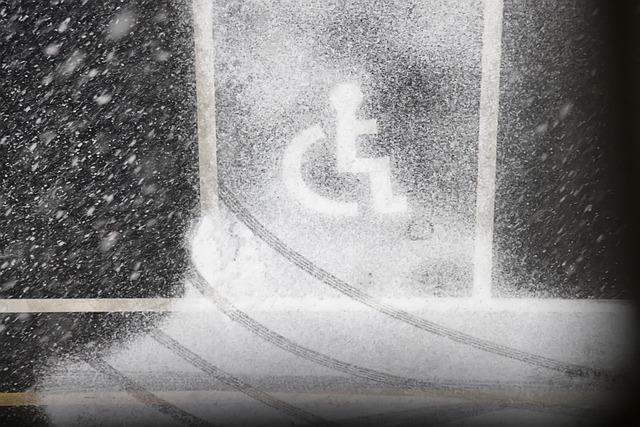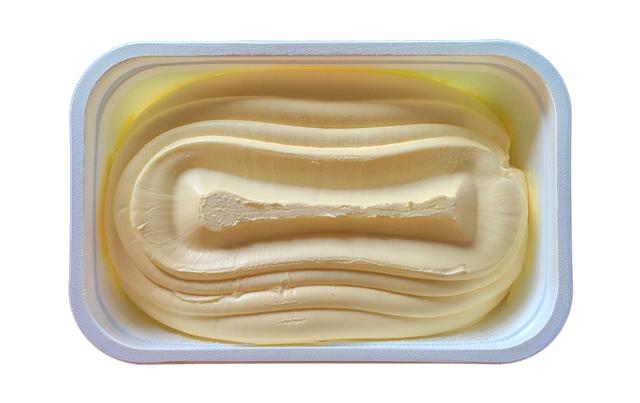Can You Put Epsom Salt in an Ice Bath: Adding Relaxation to Cold Therapy

Are you a firm believer in the benefits of cold therapy but craving a little extra relaxation during your ice baths? Look no further! In this informative article, we will address the burning question: Can you put Epsom salt in an ice bath? We will dive deep into the world of cold therapy and explore how the addition of Epsom salt can take your chilling experience to a whole new level. So sit back, relax, and prepare to uncover the secrets of combining relaxation and cold therapy like a true expert.
Contents
- 1. Enhancing the Benefits of an Ice Bath: Exploring the Potential of Epsom Salt
- 2. The Science Behind Epsom Salt: Supporting Muscle Recovery and Relieving Soreness
- 3. How to Prepare an Epsom Salt Ice Bath: Step-by-Step Guide for Optimal Relaxation
- 4. Maximizing the Soothing Effects: Essential Oils to Complement Epsom Salt in Ice Baths
- 5. Targeted Muscle Relief: Customizing Epsom Salt Ice Baths for Specific Body Parts
- 6. Epsom Salt Ice Baths for Athletes: Boosting Performance and Accelerating Recovery
- 7. Taking Time for Self-Care: Creating a Tranquil Environment for Epsom Salt Ice Baths
- 8. Easing Stress and Promoting Relaxation: Epsom Salt Ice Baths as a Wellness Ritual
- 9. Safety Considerations: Tips for Using Epsom Salt in Ice Baths Responsibly
- 10. Beyond Cold Therapy: Creative Ways to Incorporate Epsom Salt into Your Wellness Routine
1. Enhancing the Benefits of an Ice Bath: Exploring the Potential of Epsom Salt
Adding Epsom salt to an ice bath can take the benefits of cold therapy to a whole new level. Not only does it enhance the overall experience, but it also provides various relaxation benefits that can aid in recovery and improve overall well-being.
One of the key advantages of adding Epsom salt to an ice bath is its ability to promote muscle relaxation. The magnesium sulfate in Epsom salt works to soothe the muscles, reducing tension and relieving pain. This is especially beneficial for athletes and individuals who engage in intense physical activities, as it helps to alleviate muscle soreness and improve recovery time.
Additionally, Epsom salt can also help to improve sleep quality. The magnesium content in Epsom salt has calming properties that can aid in reducing stress and promoting relaxation, leading to a better night’s sleep. Using Epsom salt in an ice bath before bedtime can be a great way to unwind and prepare the body for a restful sleep.
To incorporate Epsom salt into your ice bath, simply dissolve a generous amount (approximately 2 cups) of Epsom salt in warm water before adding it to the cold water in your bath. Stir the mixture well to ensure the salt is fully dissolved. Once the Epsom salt ice bath is ready, soak your body for about 15-20 minutes, allowing the salt and cold water to work their magic.
In conclusion, by adding Epsom salt to your ice bath, you not only enhance the benefits of cold therapy but also introduce relaxation and muscle recovery properties. So go ahead, give it a try, and experience the soothing effects of an Epsom salt ice bath for yourself. Your body will thank you!
2. The Science Behind Epsom Salt: Supporting Muscle Recovery and Relieving Soreness
Epsom salt, also known as magnesium sulfate, has long been praised for its significant role in supporting muscle recovery and relieving soreness. It is commonly used in warm baths to relax the body and ease tired muscles after a strenuous workout. But have you ever wondered if you can incorporate Epsom salt into an ice bath? The answer is, yes!
Adding Epsom salt to an ice bath not only enhances the benefits of cold therapy but also introduces an element of relaxation to the process. The combination of cold water and Epsom salt creates a unique experience that aids in reducing inflammation, promoting muscle healing, and providing a soothing effect to the body.
When dissolved in water, Epsom salt releases magnesium and sulfate ions, which are readily absorbed by the skin. This absorption promotes the production of serotonin, a neurotransmitter that contributes to feelings of relaxation and well-being. The addition of Epsom salt to an ice bath can help to ease muscle tension and enhance the overall benefits of the therapy.
To create the perfect Epsom salt ice bath, fill a tub or basin with cold water and add a generous amount of Epsom salt. Stir the water until the salt has completely dissolved. You can also enhance the experience by adding a few drops of your favorite essential oil for a pleasant aroma.
Once the ice bath is ready, immerse your body in the cold water and allow yourself to relax and unwind for a recommended duration of 10-20 minutes. The cold temperature will help to reduce inflammation and alleviate muscle soreness, while the Epsom salt will provide a calming effect on both the body and mind.
So, the next time you’re looking to reap the benefits of cold therapy, don’t hesitate to incorporate Epsom salt into your ice bath routine. It’s a simple yet effective way to enhance muscle recovery, relieve soreness, and add a touch of relaxation to your cold therapy routine.
3. How to Prepare an Epsom Salt Ice Bath: Step-by-Step Guide for Optimal Relaxation
Adding Epsom salt to an ice bath can take your cold therapy to the next level, providing optimal relaxation and numerous health benefits. Epsom salt, also known as magnesium sulfate, is widely recognized for its soothing properties and ability to ease muscle soreness and tension. By incorporating this natural remedy into your ice bath routine, you can amplify the therapeutic effects and enhance your overall well-being.
Here’s a step-by-step guide on how to prepare an Epsom salt ice bath for the ultimate relaxation experience:
-
Fill a bathtub or a large basin with cold water: Start by filling the container with cold water, ensuring that there is enough to submerge your body comfortably. The temperature should be low enough to induce the desired cold therapy effect.
-
Add Epsom salt to the water: Measure out the desired amount of Epsom salt based on the package instructions. Generally, a ratio of 2 cups of Epsom salt per gallon of water is recommended. Sprinkle the salt into the water and use your hand or a spoon to dissolve it thoroughly.
-
Mix well and let it cool: Use your hand or a stirring tool to mix the water and Epsom salt mixture, ensuring that the salt is evenly distributed. Allow the water to cool for a few minutes before getting in.
- Submerge yourself and relax: Carefully lower your body into the Epsom salt ice bath, ensuring that you are fully submerged. Find a comfortable position and allow yourself to relax for at least 10-15 minutes.
During this time, you can focus on deep breathing or engage in meditation to enhance the overall relaxation experience. The combination of cold therapy and the magnesium-rich Epsom salt will work wonders for your muscles, promoting circulation, reducing inflammation, and relieving any soreness or tightness.
Remember, it is important to listen to your body and adjust the temperature and duration of your ice bath accordingly. If you experience any discomfort or pain, it is advisable to discontinue the treatment and consult a healthcare professional. So why wait? Try adding Epsom salt to your next ice bath session and reap the benefits of a truly relaxing and rejuvenating experience.
4. Maximizing the Soothing Effects: Essential Oils to Complement Epsom Salt in Ice Baths
Ice baths have long been a popular method for reducing inflammation, speeding up recovery, and improving athletic performance. But did you know that adding Epsom salt can enhance the soothing effects of cold therapy? Epsom salt, also known as magnesium sulfate, is a natural compound that has been used for centuries to promote relaxation and relieve muscle soreness.
When combined with an ice bath, Epsom salt can help maximize the therapeutic benefits by providing additional relief for tired muscles and joints. The magnesium in Epsom salt is easily absorbed through the skin, allowing it to work its magic from the outside in. This essential mineral plays a vital role in over 300 biochemical reactions in the body, including muscle and nerve function, protein synthesis, and energy production.
To complement the effects of Epsom salt in your ice bath, you can also incorporate essential oils known for their soothing properties. Lavender oil, for example, is renowned for its calming scent and ability to promote relaxation. Peppermint oil, on the other hand, offers a cooling sensation that can help alleviate muscle pain and tension. Adding a few drops of these essential oils to your ice bath can create a truly spa-like experience.
In summary, combining Epsom salt with an ice bath can provide a powerful one-two punch for relaxation and recovery. By incorporating essential oils with their unique properties, you can take your cold therapy routine to the next level. So the answer to the question "Can you put Epsom salt in an ice bath?" is a resounding yes, and by doing so, you can enhance the benefits of cold therapy and create a more enjoyable experience for both your body and mind.
5. Targeted Muscle Relief: Customizing Epsom Salt Ice Baths for Specific Body Parts
Epsom salt ice baths are a fantastic way to combine the benefits of cold therapy and muscle relaxation. By adding Epsom salt to your ice bath, you can customize the experience to target specific body parts that are in need of relief. Whether it’s sore muscles after an intense workout or aching joints from a long day at work, these customized baths can provide the targeted muscle relief you’re looking for.
One of the advantages of Epsom salt ice baths is their versatility. You can create different temperature variations to concentrate the cold therapy on specific areas of the body. For example, if you want to focus on your legs, you can make the water colder at the bottom of the bath and slightly warmer at the top, allowing the cold water to have a more pronounced effect on your lower body.
To further enhance the benefits of the ice bath, you can also add essential oils or herbs to the Epsom salt mixture. Lavender oil, for instance, has calming properties that can promote relaxation and reduce inflammation. Eucalyptus oil, on the other hand, can provide a cooling sensation and help soothe respiratory issues. By experimenting with different combinations, you can create a personalized ice bath experience that caters to your specific needs.
Here’s a sample relaxation guide for specific body parts using customized Epsom salt ice baths:
-
Head and Neck: Immerse your face, head, and neck in the ice bath while keeping your body upright. This will help reduce migraines or tension headaches. Mixing Epsom salt with a few drops of peppermint oil can enhance the cooling effect and provide additional relief.
-
Shoulders and Upper Back: Submerge your shoulders and upper back in the ice bath, allowing the cold water to ease muscle tension and reduce inflammation. Adding a few tablespoons of rosemary leaves to the Epsom salt mixture can boost the soothing effect on these areas.
- Hands and Arms: Place your hands and arms in the ice bath while keeping your torso outside the tub. This targeted therapy can be beneficial for conditions like carpal tunnel syndrome or arthritis. Adding a few drops of chamomile oil to the Epsom salt mixture can help alleviate pain and promote relaxation.
Remember, it’s always best to consult with a healthcare professional before trying any new therapy, especially if you have existing medical conditions or injuries. Start with shorter durations and gradually increase the time spent in the ice bath to avoid any potential discomfort or adverse effects. Enjoy the soothing benefits of Epsom salt ice baths and give your body the targeted muscle relief it deserves.
6. Epsom Salt Ice Baths for Athletes: Boosting Performance and Accelerating Recovery
Epsom salt ice baths have gained popularity among athletes as a way to enhance their performance and speed up recovery. By combining the benefits of cold therapy with the muscle-soothing properties of Epsom salt, athletes can take their post-workout routine to the next level. But how exactly does it work?
First and foremost, Epsom salt is composed of magnesium sulfate, which is easily absorbed through the skin. This essential mineral plays a crucial role in overall muscle function, and its deficiency can lead to muscle cramps and soreness. When added to an ice bath, Epsom salt helps to relax and alleviate muscle tension, promoting faster recovery.
Additionally, the cold temperature of the ice bath helps to reduce inflammation and swelling in the muscles, allowing for quicker recovery and less post-exercise soreness. The combination of cold therapy and Epsom salt creates a powerful synergy that can benefit athletes of all levels.
Incorporating Epsom salt ice baths into your routine is quite simple. Fill a bathtub or a large basin with cold water and add a generous amount of Epsom salt. Aim for about 2 cups of Epsom salt per 20 gallons of water. Stir well to dissolve the salt and then immerse your body for 10-15 minutes. You can also add a few ice cubes if you prefer a colder temperature. Remember to stay hydrated throughout the process.
The benefits of Epsom salt ice baths are numerous. Not only do they help athletes recover faster, but they also promote better sleep, reduce stress, and improve overall well-being. So if you’re looking to give your performance a boost and accelerate your recovery, consider adding Epsom salt ice baths to your routine. Your body will thank you!
| Benefits of Epsom Salt Ice Baths |
|---|
| Accelerates muscle recovery |
| Reduces inflammation and swelling |
| Soothes muscle tension and soreness |
| Promotes better sleep |
| Alleviates stress |
| Improves overall well-being |
7. Taking Time for Self-Care: Creating a Tranquil Environment for Epsom Salt Ice Baths
Taking time for self-care is essential for maintaining a healthy mind and body. And what better way to enhance your self-care routine than by creating a tranquil environment for your Epsom salt ice baths? While ice baths are known for their numerous health benefits, adding Epsom salt to the mix can take your experience to a whole new level of relaxation.
When it comes to cold therapy, Epsom salt can work wonders for soothing sore muscles, reducing inflammation, and promoting overall well-being. The magnesium sulfate in Epsom salt is quickly absorbed through the skin, helping to relax tense muscles and alleviate any lingering aches and pains.
To create a tranquil environment for your Epsom salt ice baths, follow these simple steps:
1. Fill a bathtub or basin with cold water: Start by filling your chosen container with cold water. The water temperature should be around 50-60 degrees Fahrenheit (10-15 degrees Celsius), but you can adjust it to your preference.
2. Add Epsom salt: For optimal relaxation, add 1-2 cups of Epsom salt to your cold water. Stir the salt well until it is dissolved.
3. Create a soothing atmosphere: To enhance the tranquility of your ice bath, consider adding candles, soothing music, or essential oils to further enhance your experience.
4. Take the plunge: Gently lower your body into the Epsom salt ice bath, making sure to submerge yourself completely for the desired duration, typically 10-15 minutes.
5. Reap the benefits: As you relax in the Epsom salt ice bath, allow the cold water and magnesium sulfate to work their magic. The combination of cold therapy and Epsom salt can help reduce muscle soreness, improve circulation, and promote relaxation.
In conclusion, incorporating Epsom salt into your ice baths is a simple yet effective way to enhance the benefits of cold therapy. By taking the time to create a tranquil environment and allowing yourself to fully immerse in the experience, you can truly reap the rewards of this rejuvenating self-care practice. So go ahead, indulge in the soothing properties of Epsom salt and make your ice baths a truly tranquil and rejuvenating experience.
8. Easing Stress and Promoting Relaxation: Epsom Salt Ice Baths as a Wellness Ritual
Epsom salt ice baths offer a unique twist on traditional cold therapy, combining the benefits of icy cold water with the soothing and relaxation-inducing properties of Epsom salt. While ice baths are often used for reducing inflammation and speeding up muscle recovery after intense workouts, adding Epsom salt takes the experience to a whole new level. Here’s everything you need to know about incorporating this wellness ritual into your routine.
1. Increased muscle relaxation: Epsom salt, also known as magnesium sulfate, has long been praised for its muscle-relaxing properties. When dissolved in an ice bath, the salt helps to further relax tense muscles, reduce muscle spasms, and alleviate soreness more effectively.
2. Enhanced stress relief: We all know how stress can weigh us down mentally and physically. By taking an Epsom salt ice bath, you can create a serene and tranquil environment that helps to soothe your mind and body. The combination of the cold water and the magnesium in the salt works together to promote relaxation and ease stress, leaving you feeling calm and rejuvenated.
3. Improved circulation and detoxification: Cold therapy on its own is known to stimulate blood flow and improve circulation, assisting in the removal of toxins from the body. When Epsom salt is added to the mix, it further supports these processes, helping to flush out toxins and promote overall detoxification.
To create your own Epsom salt ice bath, simply fill a bathtub or basin with cold water and add a generous amount of Epsom salt. Stir to dissolve the salt, and then submerge your body in the invigorating mixture for around 10-15 minutes. It’s important to note that ice baths, including those with Epsom salt, should be approached with caution and avoided if you have certain medical conditions or injuries. As always, consult with a healthcare professional before incorporating any new wellness rituals into your routine.
9. Safety Considerations: Tips for Using Epsom Salt in Ice Baths Responsibly
While using Epsom salt in ice baths can enhance the benefits of cold therapy, it is important to prioritize safety. By following these tips, you can ensure a relaxing and responsible experience:
- Start with clean, warm water: Before adding Epsom salt, make sure your ice bath is prepared with clean, warm water. This will help the salt dissolve evenly and prevent any potential skin irritation.
- Measure the right amount: Use a measuring cup to accurately add Epsom salt to your ice bath. The recommended amount is usually 2 cups per standard bathtub, but you may need to adjust it based on your personal preference.
- Test for allergies or sensitivity: It’s always a good idea to perform a skin patch test before fully soaking in an Epsom salt ice bath. Apply a small amount of the dissolved mixture on a small area of your skin and wait to see if there are any adverse reactions.
- Maintain a suitable temperature: While the coldness of ice baths can be intense, it’s crucial to ensure the water temperature remains safe. Aim to keep it between 50 and 60 degrees Fahrenheit (10-15 degrees Celsius) to avoid hypothermia or frostbite.
- Avoid prolonged exposure: Limit your time in the ice bath to 10-15 minutes to prevent overexposure and potential discomfort. Pay attention to how your body responds and adjust accordingly.
- Stay hydrated: Cold therapy can be dehydrating, so make sure to hydrate before and after your ice bath session. Drinking water will help compensate for the fluid loss caused by the cold temperature.
By embracing these safety considerations, you can confidently add Epsom salt to your ice baths and maximize the potential benefits while maintaining a responsible approach to your wellness routine.
10. Beyond Cold Therapy: Creative Ways to Incorporate Epsom Salt into Your Wellness Routine
Epsom salt is a versatile and popular ingredient known for its therapeutic properties. While it is commonly used in warm baths to soothe sore muscles and promote relaxation, it can also be incorporated into cold therapy like ice baths. The addition of Epsom salt to an ice bath not only enhances its benefits but also adds an extra element of relaxation.
So, can you put Epsom salt in an ice bath? Absolutely! Adding Epsom salt to an ice bath can help ease muscle tension, reduce inflammation, and promote overall well-being. The combination of the cold temperature and the magnesium sulfate in the Epsom salt creates a powerful synergy that can enhance the benefits of cold therapy.
To incorporate Epsom salt into your ice bath routine, simply dissolve a couple of cups of Epsom salt in warm water before adding it to your ice bath. Stir well to ensure that the salt is fully dissolved. Once the solution is ready, gradually add the ice to the tub until it reaches your desired temperature.
Not only will the Epsom salt help relax your muscles, but it will also provide a luxurious and spa-like experience. You can take your ice bath to the next level by adding essential oils, such as lavender or eucalyptus, for an aromatherapy boost. Remember to stay hydrated and limit your ice bath sessions to 8-10 minutes for optimal results.
Incorporating Epsom salt into your cold therapy routine can be a fantastic way to enhance the benefits and boost relaxation. Give it a try and discover the rejuvenating effects that this simple addition can bring to your wellness routine. In conclusion, combining the power of Epsom salt with the invigorating benefits of an ice bath can take your cold therapy routine to a whole new level. Not only does Epsom salt provide relaxation and muscle recovery, but it also enhances the overall experience of cold therapy. By dissolving a few cups of Epsom salt into your ice bath, you can create a luxurious and soothing environment that promotes both physical and mental well-being. So, the next time you embark on your cold therapy journey, don’t hesitate to take it up a notch with the addition of Epsom salt. Your body will thank you for the extra dose of relaxation and rejuvenation!










